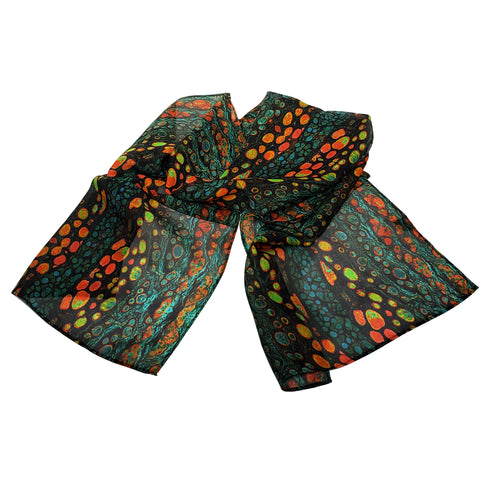


Silk Chiffon Scarf 12" x 58" - $45.00
Sha Wang, Ph.D., Postdoctoral Fellow (Gumucio Laboratory), Department of Cell and Developmental Biology, University of Michigan Medical School
The intestine has a huge surface area for nutrient absorption. In an adult human, the total surface area of the intestine is equivalent to half a tennis court! Some of this surface is provided by the tremendous length of the intestine (approximately 20-22 feet long in adults), but another important adaptation is the complex folding of the surface into finger-like projections called villi. Villi form in mid-gestation. This picture of a mouse intestine shows the beautifully patterned and well-packed villi as they emerge in fetal life. In this image, the absorptive surface is marked in red. Individual epithelial cells are outlined in green, while cell nuclei are blue. Events that compromise villus formation (e.g., loss of proper blood supply to the tissue) or cause loss of intestinal length (e.g., short gut syndrome) can be life threatening. Thus, there is a great need to learn more about how the intestine grows and how villi form so as to be able to engineer these events in the laboratory with the goal of replacing damaged or missing tissues.



